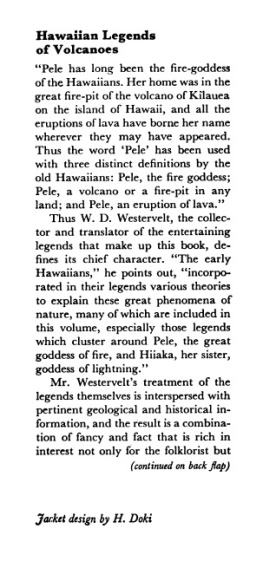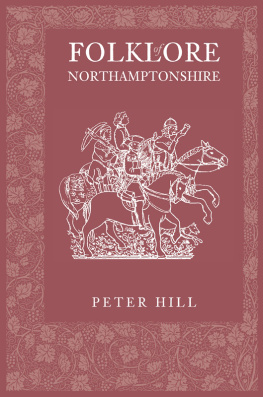Spirit of the New England Tribes
INDIAN HISTORY AND FOLKLORE
William S. Simmons
University Press of New England
Hanover and London
University Press of New England
One Court Street, Lebanon NH 03766
www.upne.com
1986 by University Press of New England
All rights reserved
ISBN-13: 978-0-87451-372-1
eISBN: 978-1-5126-0317-0
For permission to reproduce any of the material in this book, contact Permissions, University Press of New England, One Court Street, Lebanon NH 03766; or visit www.upne.com
This publication has been supported by the National Endowment for the Humanities, a federal agency which supports the study of such fields as history, philosophy, literature, and languages.
Library of Congress Cataloging-in-Publication Data
Simmons, William Scranton, 1938
Spirit of the New England tribes.
Bibliography: p.
Includes index.
1. Indians of North AmericaNew EnglandFolklore. 2. Indians of North AmericaNew EnglandLegends. 3. LegendsNew England. 4. Indians of North AmericaNew EnglandHistory. 5. New EnglandHistory, Local. I. Title.
E78.N5S54 1986 398.2'08997074 8540936
To Cheryl and RivaContents
PREFACE
1. Introduction
2. From the Past to the Present
3. Worldview
4. The First Europeans
5. Christianity
6. Shamans and Witches
7. Ghosts and the Devil
8. Treasures
9. Giants: Maushop and Squant
10. Little People
11. Windows to the Past: Dreams and Shrines
12. Conclusion: There is a Stream That Issues Forth
APPENDIX
BIBLIOGRAPHY
INDEX OF FOLKLORE MOTIFS
GENERAL INDEX
Preface
I present in this volume examples of southern New England Indian folklore from the earliest European contact to the present day. Two conversations shaped this folkloreone between the living and the dead and the other between the living and the changing world into which they were born. Each generation inherited a body of legends, symbols, and meanings from their predecessors and revised this heritage in recognition of their own experiences. Over the last four centuries the southern New England tribes merged more and more with the larger Euro-American society, and the tribes oral traditions show strong influences from American folklore in general. Despite this movement away from their past, ancestral voices continue to speak to the living through oral narratives, and the living in turn attribute new and borrowed customs to ancestral sources. In a world where the New England tribes have little in common with their early predecessors and much in common with non-Indian neighbors, folklore is an important link with and source for their Indian identity. I hope to identify the symbols through which they expressed this identity over time and observe how the succession of historic events affected these symbols. I draw mainly upon three kinds of data. The first is the folklore texts themselves and what can be said about their authenticity, content, and changes. Second is the local and large-scale historical circumstances that acted upon the Indian communities. Third is the Yankee, English, Afro-American, and other folklore traditions from which the southern New England Indians borrowed in rebuilding their own narratives. My overall aim is to represent the symbolism, worldview, we might say spirit, of the New England tribes in the context of their material and historic existence. The folklore texts are divided into chapters on witches, ghosts, giants, treasures, and so on, and each text is presented in chronological order from the seventeenth century to the present. Not a history per se, this book is a commentary upon the folklore narratives in terms of which the southern New England Indians registered their past.
In quoted passages obvious slips of the pen have been corrected without comment. Superscript letters have been lowered to the line of the text, and the thorn has been expanded. Editors omissions are noted by three ellipsis points if the omission entails only part of a sentence, and four ellipsis points if it comes between sentences or if it entails more than a sentence but less than a paragraph. A row of ellipsis points is used if the omission includes a paragraph or more. Words added to clarify texts are placed within brackets. The dates given above the individual texts reflect the approximate recording date, or the earliest publication date.
The design elements facing the title page and on chapter openings are taken from historic period southern New England Indian painted baskets. The design element on the Preface opening is taken from the end of Roger Williamss A Key into the Language of America.
I drew the folklore texts together from published and manuscript sources and from interviews with contemporary New England Indians. I first visited Gay Head, for four days, in March 1981; in July 1981 I spent several days in Mashpee on Cape Cod. I was more successful at Gay Head than at Mashpee even though several friends and colleagues (principally the Reverend Harold Mars, James Deetz, and Anne Yentsch) had given me good contacts in the latter community. This was perhaps due to the fact that the Mashpee Wampanoag Tribal Council, Incorporated, had recently lost a major court case in which they attempted to gain federal recognition as an Indian tribe, which would have enabled them to file suit to reclaim thousands of acres of land they had held jointly as a proprietorship until the late nineteenth century. Nonetheless, a number of Mashpee residents, including the tribal historian Amelia Bingham and a young woman who identified herself as Nosapocket, were very hospitable. Carol Bennett of the Vineyard Gazette and Gale Huntington of the Dukes County Historical Society provided contacts for me with several Gay Head people, including Wenonah Silva, Leonard Vanderhoop, and Eloise Page, who were generous with their knowledge of Gay Head legends. Donald Widdiss of the Wampanoag Tribal Council of Gay Head, Incorporated, was drafting a petition for federal recognition for Gay Head and saw that my research on oral traditions would strengthen their case. Widdiss introduced me to his mother, Gladys Widdiss, and uncle, Donald Melanson, who spoke to me at some length about Gay Head landmarks, folklore, and history. Again, I visited Mashpee and Gay Head for several days each in April 1983 but obtained no new interviews at Mashpee. At Gay Head, Silva, Page, Vanderhoop, and Melanson furnished new materials, and Silva introduced me to her aunt, Ada Manning, whom I also interviewed. In April and again in June 1983 I taped a number of ghost stories and other legends with old Narragansett friends, the Reverend Harold Mars and his wife, Laura Mars of Charlestown, Rhode Island. On several occasions in spring and summer 1983 and summer 1984 I visited Gladys Tantaquidgeon and Courtland E. Fowler of the Mohegan Tribal Office in Uncasville, Connecticut. Both were very interested in the folklore research and talked at some length about Mohegan history and traditions. Tantaquidgeon had done extensive folklore research in Mashpee and Gay Head about fifty-five years earlier; she still had her extensive unpublished field notes as well as the outline for an unfinished manuscript on New England Indian culture heroes, which she generously offered for use in this study. Like an archaelogist who leaves part of the site in the ground, I copied the legends and folktales from Tantaquidgeons notes but did not transcribe her information on plant lore and medicine. She also conducted me through the collections of Mohegan and Niantic material culture in the unique Tantaquidgeon Indian Museum that she and her brother, Harold Tantaquidgeon, have run for many years. Fowler, who looks like his eighteenth-century ancestor, Samson Occom, gave me the typed text of a ghost story involving the anthropologist Frank Speck and also showed me his personal collection of bowls, baskets, carvings, papers, and other heirlooms that he had inherited from his Mohegan forebears. In spring 1984 I interviewed Eric Thomas, a Narragansett who is currently an undergraduate at the University of California, Berkeley, who had worked for several years to prepare the Narragansett petition for federal recognition. In 1984 I interviewed another old friend, Ella Seketau, of the Narragansett Tribe, Incorporated, in the Narragansett Longhouse in Charlestown, who told me several legends I had not heard before. I am extremely grateful to all of these New England Indian people for their openness, kindness, patience, and generosity, and for enabling me to connect the historical record with living tradition. I also should like to acknowledge Earl Mills and Selena and Kenneth Coombs of Mashpee, June MacDonald and Tony Pollard of Plimoth Plantation, Jane Waters of North Dartmouth, Helen Attaquin and Clinton and Daisy Haynes of Middleboro, John Brown of Narragansett, and Dorothy Scoville of Gay Head for some important discussions.










